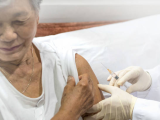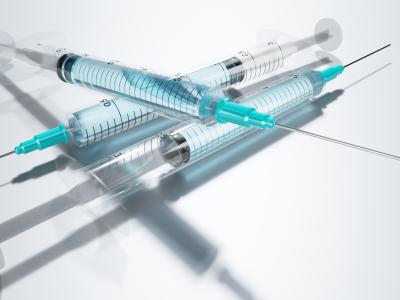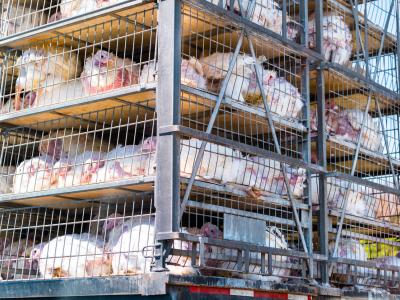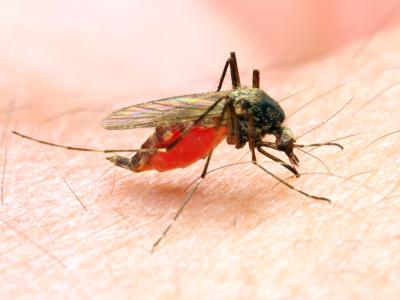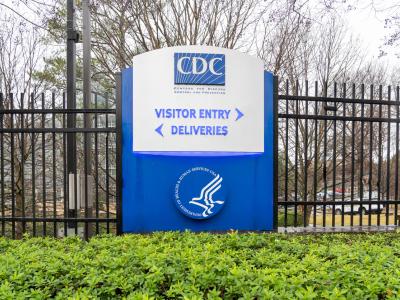Dec 13, 2011 (CIDRAP News) – Novartis's new cell-culture based influenza vaccine factory in North Carolina has begun making a prepandemic H5N1 flu vaccine and is ready to start producing vaccines for a real pandemic when needed, the company and federal health officials announced yesterday.
The facility in Holly Springs, N.C., billed as the first of its kind in the United States, was dedicated yesterday after a long testing process.
As part of the testing, last week the plant produced two lots of "prepandemic" H5N1 flu vaccine for the Strategic National Stockpile, and another lot will be completed this week, for a total of 6.5 million doses, said Liz Power, a spokeswoman for Novartis Vaccines and Diagnostics, Cambridge, Mass.
"The dedication signals that in an influenza pandemic the facility can produce cell-based influenza vaccine that could be authorized by the US Food and Drug Administration for use during the emergency," the US Department of Health and Human Services (HHS) said in a press release.
Dr. Robin Robinson, director of HHS's Biomedical Advanced Research and Development Authority (BARDA), called the plant's dedication "a major milestone" in national pandemic preparedness. "Today we're marking the first change in influenza vaccine manufacturing in the United States in 50 years," he said in the release.
Cell-based vaccine production involves growing flu viruses in mammalian cell cultures instead of in chicken eggs, the conventional method. It is regarded as more flexible and somewhat faster than egg-based production. No cell-based flu vaccine has yet been approved by the FDA, though such vaccines, including one made by Novartis, are licensed in Europe.
In a flu pandemic, the Novartis plant may be able to produce up to 25% of the vaccine doses needed in the United States, HHS said. The facility is designed to produce 150 million doses of a monovalent vaccine within 6 months after declaration of a pandemic, according to Power.
Experts say cell-based production is expected to shave a few weeks off the time it takes to produce a vaccine for a novel flu virus. The 6-month goal cited by Novartis sounds fairly similar to the timing with egg-based vaccine production.
With the traditional technology, it typically takes 4 to 6 months to start producing a vaccine in quantity for a novel flu virus. In the case of the 2009 H1N1 pandemic, the virus was identified in mid-April, and supplies of vaccine began reaching providers in early October, though supplies remained short until December.
Novartis's US efforts have been spurred by two major federal contracts. In 2006 the firm won a $220 million HHS contract to develop cell-based flu vaccines, and in January 2009 HHS awarded a $487 million contract to help build the Holly Springs facility.
The company marked completion of major construction with a ribbon-cutting ceremony in November 2009. The plant cost close to $1 billion in Novartis and federal funds, the company said in a news release.
The facility consists of six connected buildings with 430,000 square feet of manufacturing, laboratory, and office space on a 167-acre site, Novartis reported in a news release. The company has about 400 employees there now and plans to expand to 500 by the end of 2012. Power said the facility is expected to be ready for full-scale commercial production in 2013.
Novartis is also building a $36 million development lab and pilot plant at the site, with completion expected in early 2012, according to the company release. Plans for that facility were announced in December 2010.
Power said the facility was required to produce the H5N1 vaccine to meet federal criteria for validating the production processes. Besides making vaccine lots for process validation, the plant is making supplies for clinical studies.
In addition, the facility is making ingredients for vaccines marketed outside the United States, including Novartis's propriety adjuvant, MF59, Power reported.
"What we want to be sure people understand is that the site is an active facility. There's work going on there right now," she said.
Novartis has a plant in Marburg, Germany, that makes Optaflu, a cell-based seasonal flu vaccine, for marketing in the European Union.
The company intends to seek FDA approval for a cell-based seasonal flu vaccine. "We are on track to have that vaccine [application] filed by next year," Power said, adding that she could give no further details on the plans.
The HHS statement said that in addition to working with Novartis to bring cell-based flu vaccine and adjuvant technologies to the United States, HHS and the company "are partnering with Synthetic Genomics Vaccines of Rockville, Maryland, on new technologies to shorten the vaccine manufacturing timeline by optimizing vaccine virus seed strains used for flu vaccine production."
Also, BARDA and Novartis are working to train scientists from other countries to use cell-based techniques like those used in the new facility, according to HHS.
Novartis is one of five companies that received sizable HHS contracts in 2006 to develop cell-based vaccines.
See also:
Dec 12 HHS press release
Dec 12 Novartis press release
Nov 24, 2009, CIDRAP News story on Novartis plant






